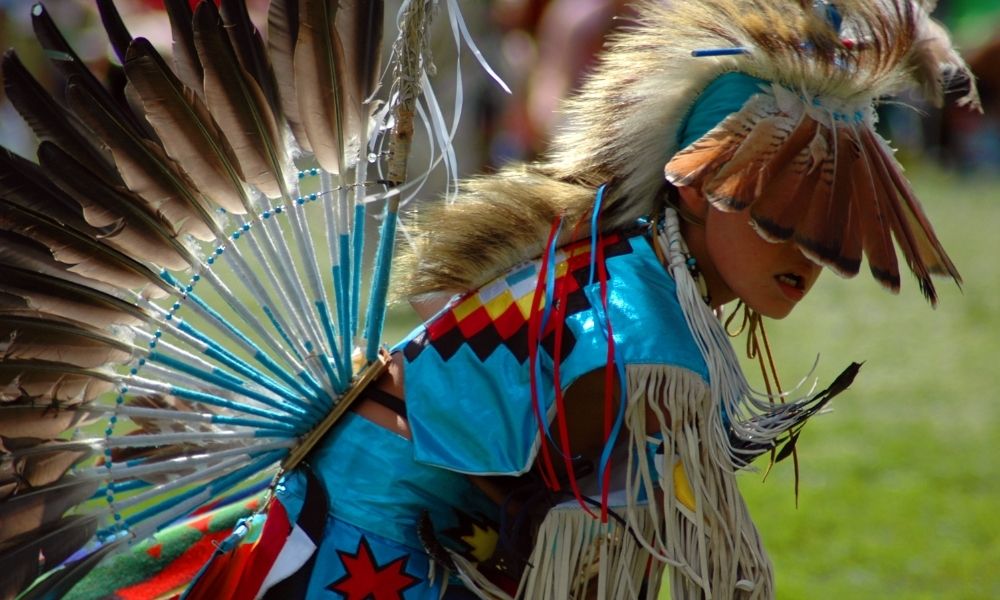Top Authentic Native American Drum Accessories
Native American drums are sac..
 ">
">If you’ve ever been to a powwow, you might have noticed the colorful, elaborate attire that the dancers wore. A dancer’s outfit, more commonly known as regalia, is a powerful form of self-expression. Regalia reflects the dancer’s Native American heritage through the renewal of traditions as well as their individuality. The type of materials and ornaments that are used in regalia vary from region to region and tribe to tribe.
While the community dictates the most basic features of the regalia, the garment is often personalized to reflect the dancers’ lives, interests, and family background. The making of regalia is often considered a tradition, and once made, it is designed to stay with the dancer and their family for many generations to come. In this guide, we’ll explain what to know about Native American dance regalia.
The regalia that dancers wear during ceremonies is a cherished garment and often made or commissioned by someone close to them, such as a relative or friend. It’s not unusual for families to pass down an entire dance outfit or separate pieces of the regalia. A dancer might inherit their grandmother’s moccasins, their father’s bustle, and their mother’s beadwork, for example. More often, the outfit will be made by family members, purchased in the marketplace, or commissioned from a professional artist. It can take many years for a dancer to obtain a full wardrobe of dance regalia, as most dancers will own multiple outfits.
Another important thing to know about Native American dance regalia is how much effort goes into making it. It takes a lot of skill, knowledge, and patience to make regalia by hand. Few people possess all the skills needed to make a full set of regalia. For this reason, an outfit will often come from multiple sources. One person will sew the fabric, the next will handle the leather, and someone else will create the intricate beadwork, moccasins, and feather fans. It’s rare for regalia to stay in the same form that it’s created in. The dancer might choose to embellish it further with beads, feathers, shells, or fringe, or certain elements will need repairs or replacement due to intense dancing and wear.
The appearance of regalia can differ drastically depending on the type of dance that it’s being used for. A woman that’s dancing the Jingle Dress Dance, for example, will wear ziibaaska’iganan, or metal cones, on her dress. These cones jingle as she dances around the arena, providing a complementary sound to the beat of the drum and shaking of the rattles. A dancer that’s participating in the Fancy Shawl Dance, on the other hand, will wear an elaborate shawl and beaded cape over her shoulder. During the Straight Dance, dancers will wear aprons, leggings, trailers, and otter dragger, which are fashioned from heavy wool in a dark blue or red color. This apparel is often ornamented with beadwork or ribbon work. With so many different styles, it’s no wonder that dancers need a whole wardrobe full of regalia!
The regalia that dancers wear is important, and so is the music they’re dancing to. Tachini Drums has authentic, masterfully crafted Native American drums for sale. Our drums are the perfect way to bring the heartbeat of Mother Earth into your home. Come shop with us today!